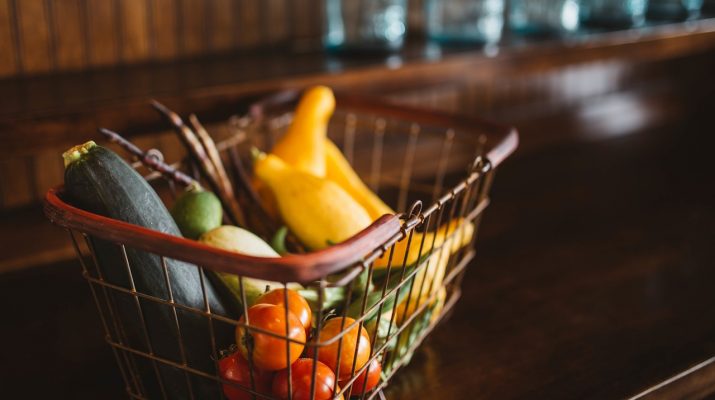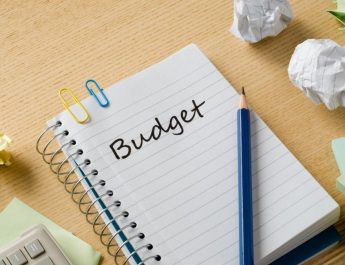Setting a grocery budget is a simple skill that everyone should have. Especially if you are on the path to FI and chasing financial freedom. The first step is to make a plan – if you’re anything like me, going to the shops for food without a plan (especially if I’m hungry) results in a lot of impulse buying and unnecessary spending, which is going to hurt your savings and leave you less money to invest. Smart investors make a plan for investing, so smart shoppers should make a plan for shopping.
Why you need a food budget
The starting point of any good food budget or grocery list is working out just how much food you actually need – buying more is typically going to result in waste, or you’ll be stuck with it all and have to find somewhere to stash it all as you chomp your way through.
Oh and another thing. Make sure your plan includes home cooking. If you really want to accelerate your path to FI, you need to maximise your savings for investing. Eating out is dumb, because it is really expensive for what you get and it can be really unhealthy.
Home cooked meals are the perfect answer for those wanting financial freedom, and can really boost your savings above the national savings rate. You can then direct this savings to build an emergency fund, pay off debt and start investing in the stock market.
We agonise over rate of returns and dividends from our stock market and investment properties, but the fact is cutting your grocery bills in half is shockingly simple!
Starting point: What your body needs
My starting point is generally a calorific value, and of course any dietary restrictions. I try to stick to a flexible Whole Food Plant Based diet within reason which means buying loads of fresh fruits, vegetables, legumes, tubers, seeds, nuts and grains. But that is not to say I don’t stick to that religiously, I just try to really minimise consumption of stuff not on the list. Your Recommended Daily Intake RDI of energy ranges depending on how active you are. Energy in versus Energy out, right?
For a standard, sedentary lifestyle such as an office worker, the RDI is about 8700 KiloJoules or about 2200 calories for men, and 7200 KiloJoules or 1800 calories for women. Sorry girls, because men typically have bigger bodies and more muscle it means they need more food to fuel and sustain them – which is why they get to chomp through more calories. Or you could think of ladies having a natural FI advantage when it comes to grocery shopping.
This figure increases depending on your level of activity and weight loss (or gain) goals. Personally I do about an hour of moderate to high intensity exercise each day, alternating between weight training (free weights and body weight exercises) and cardio involving high intensity fartlek, cycling, rowing and swimming. I try to cram in about 12,000 KiloJoules or 3000 calories worth of good quality whole foods to try and meet my ‘fitness macro goals’ of 150g of protein, 100g of Fat and 400g of Carbohydrate (P:150/F:100/C:400/CAL:3000). If you want to check out your macros there are numerous online calculator tools such as If It Fits Your Macros (IIFYM).
Step two: Plan your meals
Planning your meals is an important part of developing a food budget – now you are figuring out how you are going to meet your body’s needs, and what kinds of foods you enjoy and are likely to eat.
Breakfast
My absolute favourite breakfast and my usual go to is my home-made granola / muesli mix, with frozen berries and either cold coconut or almond milk. I have some awesome pyrex glass bowls which have plastic/rubber lids which I measure the ingredients into, add the fruit such as fresh banana or frozen berries or mango, and then pop back into the freezer.
That way in the morning when I’m short on time I just grab the pre-made bowl, give it a splash of coconut or almond milk and it’s ready to go. I try to avoid eating during travel, but I’ll usually take a flask of herbal tea (my favourite is just fresh lemon and ginger slices at the moment) to sip on. Then when I get to work (early) I will have the granola, once I’ve had time to wake up.
The granola itself consists of one cup of steel cut or rolled oats, a handful of mixed nuts (almonds, walnuts, macadamia, cashews, peanuts, hazelnuts etc), a few tablespoons worth of chia, pumpkin and flax seeds and a sprinkling of shredded coconut.

If I am at home or have a late start at work, I love making up a big breakfast. This usually means frying up some tomatoes and onion and maybe a zucchini with some garlic and chilli, cooking up some sweet potato and smashing it on toast with a little bit of hummus, and then serving it all together with a big handful of baby spinach leaves. Some fresh cracked pepper and a spritz from a lemon wedge and voila! Other times I’ll whip up some banana pancakes or whatever other inspiration I can find on places like yourvegankitchen.com.
That’s not to say that I’m trying to discourage you from your favourite Bacon and Eggs if that’s what you know and love, or your boiled eggs with toastie soldiers. If you’re more of a granola and yoghurt kind of person then that’s fine too, just figure out what you’re going to eat and write down the ingredients.
Lunch
I pre-plan my lunches and ‘meal prepping’ is something I got into from people at the gym. By pre-making all my lunches I can make sure I am getting everything my body needs, and it keeps me from splurging out on unhealthy and expensive take-away lunches.
I usually make an awesome form of ‘Buddha bowl’ which is just a mix of random delicious things. This is usually a brown rice or pasta base with loads of fresh veggies like peas, broccoli, pumpkin and with a thick tomato, sweet potato, bean and lentil based sauce packed with herbs and spices and mixed with some baby spinach leaves.
Because I am usually at work at lunch, I take my ‘Buddha bowl’ with me. If I am flying then work will provide in flight meals which are usually pretty good, but I much prefer my home made lunches.
Dinner
Dinner is often one of my meal prepped ‘Buddha bowls’ if its just me, or if I am feeling like cooking for myself I might whip up a nice pasta dish or a tray of roasted herb and garlic vegetables.
I have some staple entertaining dishes I like to serve when guests visit – my all time favourite is probably Vietnamese cold rolls, Asian fusion wonton veggie and noodle soup, and slow roasted Pears or Apples with home-made banana ice cream for dessert.
I source some of my inspiration online but if I am honest a lot of my cooking is just trial and error, or seeing what’s left in my fridge and having a go at it. Cooking is great fun and learning how to cook and enjoy the process of cooking at home is a massive part of setting and meeting your grocery budget.
Snacks
Let’s be honest – you gotta factor in the snack attack. There are loads of healthy snacks but my biggest are probably fresh and dried fruit, carrot/celery sticks with hummus, a handful of nuts or peanut butter / Vegemite toast. If you’re eating enough at your meals you shouldn’t need to snack too hard, but I ALWAYS find myself hungry, especially after big gym sessions.

Usually I scoff an orange or some grapes before hitting the gym which gives me a boost of natural sugars to kick off my workout. If it’s a low day for me or I’m getting up to run and it’s cold and miserable outside, a fresh shot of espresso coffee from my machine always gets me going!
Step three: The weekly list
Now that you know how much you need to eat, and what kind of things you are likely going to be eating, it’s time to plan out the weekly list.
At first I would go through my planned meals and break them down into what is in each portion and individually weigh ingredients to help me to track calories and general macros. This isn’t really required and I found it’s actually easy to become fairly obsessed without even realising it, which I was doing. Now I just keep a track roughly in my head of what I am eating in each meal which is more than enough to help me make sure I buy enough each week.
Go through your planned meals and figure out just what you need; for non perishables like cereals, grains, nuts and seeds it’s not really that crucial if you buy too much and it’s likely you’ll stock up in bulk and only refill them every month or so when your container is empty. It’s probably more important with your perishable fresh fruits and vegetables like baby spinach, tomatoes and avocados that you’re not over buying which could lead to waste.
My regular food shopping list which covers myself and usually a few meals for my girlfriend and I looks something like this and comes in at around $50 per week;
- 1 Kg of steel cut Oats: $1
- 500g packet of frozen mixed berries or frozen mango: $4
- 125g of mixed nuts (buy in bulk): $2
- 125g chia, flax, pumpkin seeds (buy in bulk): $2
- 50g of shredded coconut (buy in bulk): $.20
- 2 x 1L cartons of Nut milk (I alternate between Coconut, Almond, Oat or Rice milk): $3
- Kilo bag of carrots: $1
- 500g sweet potato: $2
- 500g of butternut squash pumpkin: $2
- 50ml olive oil (buy in bulk): $.40
- 250g hummus (buy in bulk): $1.50
- 1 packet of pasta: $1
- 500g apples: $2
- 500g oranges: $2
- 500g Bananas: $1.50
- 500g Tomatoes: $2
- 500g Onions: $1.5
- 200g baby spinich: $2
- 500g brown rice $2
- Cans of Red Beans, Lentils, Chickpeas and Black beans: $3 all up
- Coffee beans for espresso machine (buy in bulk): $2
- 6 serves of plant based pea protein shake (buy in bulk): $12
Of course, this is just food and doesn’t include irregular kitchen purchases like herbs, spices and things you’ll need to replenish like aluminium foil but you get the idea. In total, I would average out to get maybe 26 meals from this budget, which works out to around just over $2 per meal, which meets my higher calorific needs. This is actually making pretty lavish meals, and if you wanted to be really frugal or if you were happy to accept a lower calorific diet you could easily cut this down to $1.50-$1.00 per meal.
Some of life’s staples such as toilet paper, tissues, toothpaste or more infrequent purchases such as personal grooming products or moisturisers also need to be budgeted for and how much you need will depend on how big your household is and if you had kids etc. Buy in bulk to get a cheaper per unit price, shop savvy and compare prices with alternatives (make sure to look at percentages rather than just dollar values) and restock when you need to. I estimate I would spend under $5 a week on these combined.
On a side note I think there are a lot of things we waste our money on when doing grocery shopping: for example cleaning products, the majority of shower gels, scrubs and hair products etc. Shower gels are essentially watered down soap in big plastic tubs and actually do more harm to your skin than good (stripping your skin’s natural oils) – I use a combination of nice hot water and good old fashion soap if its needed when I have a wash. Cleaning products like spray and wipes and toilet cleaners are a huge waste of money, and Choice comparisons show often water or vinegar is a more effective cleaning product with some old fashion elbow grease.
Step four: Choose your store, and take your list with you!
Makes sure you compare prices from store to store, as different grocery store chains can have vastly different prices. There is a myriad of marketing forces at play with advertising, specials and placement of products which are designed to wreak havoc on your budget and shopping list. Make sure you take your list with you when it’s time to shop, or have it on your phone (and make sure that you’ve had something to eat before you go!)
I would recommend your local green grocer or fruit and veg store for the majority of your shop, and then check out the supermarket or other speciality store to pick up your other bits ideally in bulk and then store them in airtight sealed containers in your cupboards at home
Summary
In summary creating a grocery budget doesn’t have to be a pain in the ass and it’s actually a pretty simple process. By understanding what your body (or your family’s bodies) energy and nutrient needs are, and any dietary guidelines you’re trying to follow, you can come up with a fairly reliable meal plan for the week. From the meal plan you can come up with a list of ingredients, and then work out how much it’s all going to cost. If you like, you could set a target cost-per-meal and work backwards to save even more money, but usually a meal plan and ingredient breakdown will provide 99% of us with a budget that is appropriate and meets our needs – the hard part is now just sticking to it.
Think of your goals and why you’re doing it – for example, I now save at least $200 a week since I started budgeting for a flexible whole food plant based diet and began budgeting my grocery shops. That adds up to $10,400 a year! If a smart investor started investing this into ETF index funds in the stock market, this would grow to total over $178,000 over ten years. If you stuck to your WFPB grocery budgeting and investing strategy over 40 years, this opportunity continues to grows to over $5.4 Million! You can really see how the average consumer can keep themselves poor due to their spending habits.

Before I started actively budgeting and being mindful about my spending, I was a pretty bad impulse buyer and would load up on unnecessary luxury items and an unhealthy amount of meat and other processed crap. Budgeting really is an important tool for reaching Financial Independence.
Over the long term, the savings really do add up, and if you start investing your savings carefully like a smart investor, the combination of the compound returns and the reduction in your living expenses can help you reach Financial Independence much quicker and start living a life of freedom.

Get FI!
Captain FI is a Retired Pilot who lives in Adelaide, South Australia. He is passionate about Financial Independence and writes about Personal Finance and his journey to reach FI at 29, allowing him to retire at 30.








